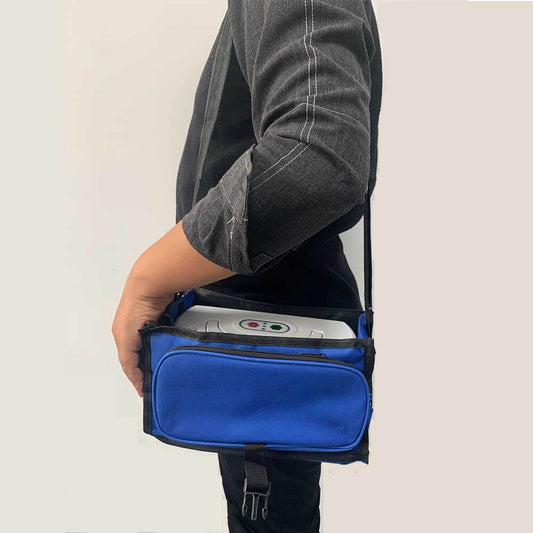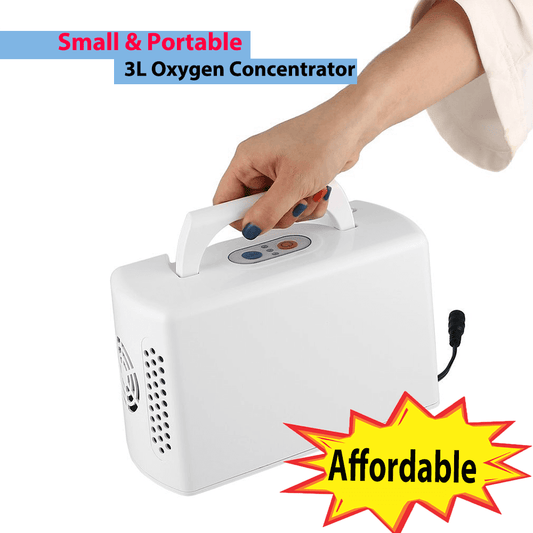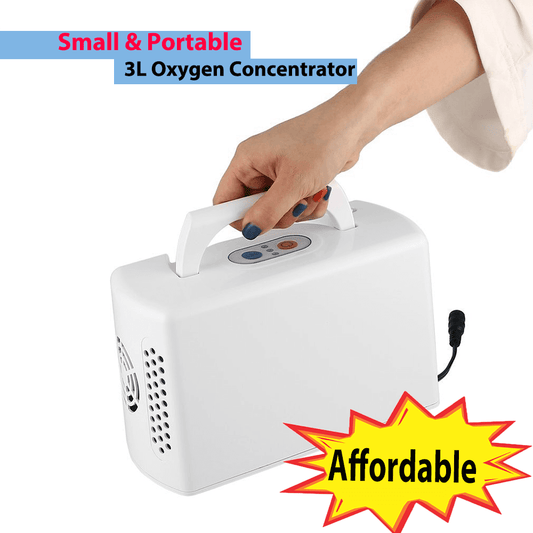
In recent years, with the air pollution and the aging of the social population, the incidence of chronic lung diseases has gradually increased. Among them, hypoxic diseases caused by chronic lung diseases are more common in clinical practice (such as COPD, etc.). Therapy can be one of the treatments.
Currently, oxygen therapy has been listed by the World Health Organization as one of the necessary treatments for hypoxic diseases. Although long-term home oxygen therapy can reduce the number of hospitalizations and prevent disease aggravation, no drug can replace the therapeutic effect of oxygen therapy. However, there are many things that need to be paid attention to when carrying out home oxygen therapy, among which choosing the correct oxygen flow rate is the most critical.
Choosing the Appropriate Oxygen Flow Rate Before choosing the appropriate oxygen flow rate, you should first understand the relationship between the oxygen flow rate and the oxygen concentration.
Home oxygen therapy for COPD patients. For COPD patients with hypercapnic respiratory failure, controlled oxygen therapy or continuous low-flow oxygen inhalation should be given. The target SpO2 range is 88% to 92% to prevent excessive concentration of oxygen therapy from causing continued paCO2 rise.
DEDAKJ portable oxygen concentrator
DEDAKJ Oxygen Concentrator Store Offers Portable Home Care Oxygen Generator 93% High Purity Oxygen 1-10 Liter Adjustable Air Oxygen Concentrator Generator Mini Size Portable Oxygen Machine O2 Generator with Nebulizer Function.

3-level flow adjustment, ≥90% oxygen concentration, synchronous oxygen supply with breathing, to meet the oxygen needs of different patients. Micro-pressure detection, automatic oxygen supply, making breathing comfortable and comfortable. Low-noise design, suitable for various environmental needs. Frequency conversion BLDC compressor, saving energy Electricity allows you to enjoy the mobile oxygen therapy experience *Note: When using the DEADKJ portable oxygen concentrator during sleep, the continuous flow mode must be used. Precautions for oxygen inhalation flow in patients with COPD (CO2 poisoning) We usually expel carbon dioxide (CO2) from the body through breathing and absorb the oxygen necessary for the human body. So, how does the human body adjust breathing?
Usually, when the CO2 in the human body increases, the person will increase the breathing frequency, and when the CO2 decreases, the breathing frequency will be reduced accordingly. This method is automatically realized, rather than being adjusted by the increase or decrease of oxygen. Therefore, even if healthy people take in a lot of oxygen from an oxygen concentrator, their breathing will not be affected. On the other hand, patients with COPD absorb oxygen through breathing because the amount of oxygen in their bodies decreases due to the disease. (rather than an increase or decrease in CO2). Therefore, if a COPD patient inhales a lot of oxygen, the body will feel that "there is enough oxygen, it doesn't matter if you don't breathe", and the breathing frequency will decrease. As a result, CO2 will continue to accumulate in the body. If too much CO2 is stored, it will cause symptoms such as headache, physical weakness, and daytime drowsiness. What's more, if the amount of CO2 stored is too much, you will lose consciousness and even cause death. This situation is called CO2 retention. COPD patients especially need to pay attention to the amount of oxygen they inhale from the oxygen concentrator. It is very important to inhale the amount of oxygen prescribed by the doctor.
I heard that COPD can be treated with oxygen therapy. Is it really effective?
The answer is yes!

The reason why oxygen therapy is needed for auxiliary treatment can be easily understood through the definition and pathological changes of COPD:
COPD: The full name is chronic obstructive pulmonary disease. It is a type of chronic bronchitis and/or emphysema characterized by airflow obstruction, which can further develop into common chronic diseases such as pulmonary heart disease and respiratory failure.
Due to inflammation and narrowing of the airways, insufficient ventilation occurs. Due to damage to the lung parenchyma, the exchange of oxygen into the blood is affected, ultimately leading to insufficient oxygen supply to the entire body. For a living body, oxygen is an indispensable substance in the metabolic process of cells and a source of energy. If the body is in a low oxygen state for a long time, it will affect the lungs and all the tissues and organs of the whole body. By inhaling oxygen, we can Effectively increase the amount of oxygen reaching the lungs to ensure the oxygen demand of the entire body. This is the fundamental reason why COPD patients need auxiliary oxygen therapy.
Because it is a chronic disease and has a long-term nature, it needs to be discovered and treated early. When it does not develop into a hypoxic state, the relative significance of oxygen therapy will be weaker, and more needs to be adjusted in terms of drugs, breathing exercises, and lifestyle, diet, and rest. When the doctor has given advice on oxygen therapy, you must pay attention to it and follow the doctor's instructions carefully to better control the deterioration of the disease and effectively avoid other complications caused by hypoxia.






















